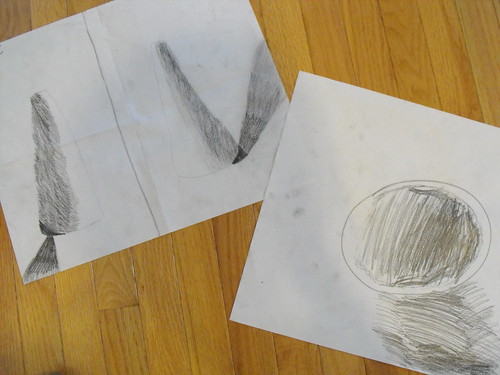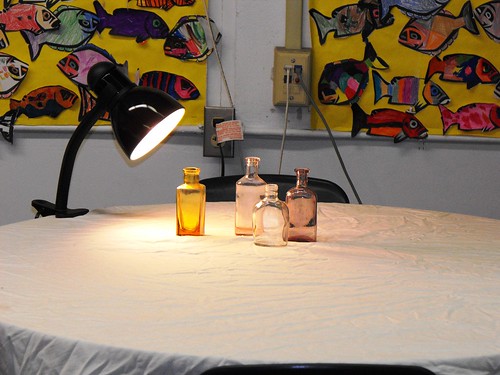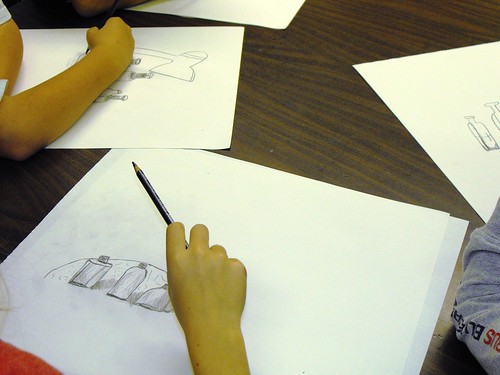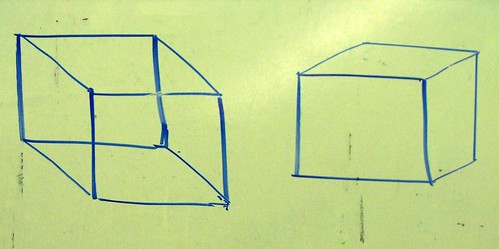
We talked about how the flat side closest to the light would be lightest, as it is reflecting the most light from the lamp. The other sides would be a bit darker and the side facing away from the light source is the darkest of all. We talked about shading to show light and dark and volume being careful not to scribble to shade or press too hard with the pencil, which would make your drawing look like you were shading a black or dark gray cube.
Some kids were looking at the cube in a silhouette-like manner because the cube was in front of the light. In this case, their cube does end up looking dark gray because the side in shadow is facing them.

Then I had the class put together a structure with simple wooden blocks to draw from. They could choose to focus on part of the structure that interested them most.
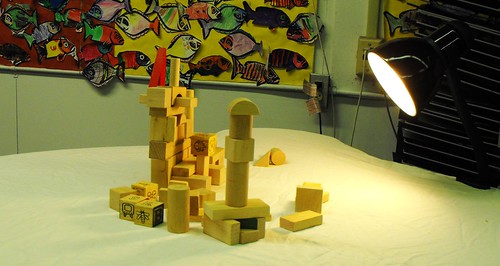


Next week, we will start a watercolor landscape. During the first class we will draw from a photograph using the skills we have learned in the first three weeks. During the following weeks we will cover some watercolor techniques and eventually paint our landscape drawing.

